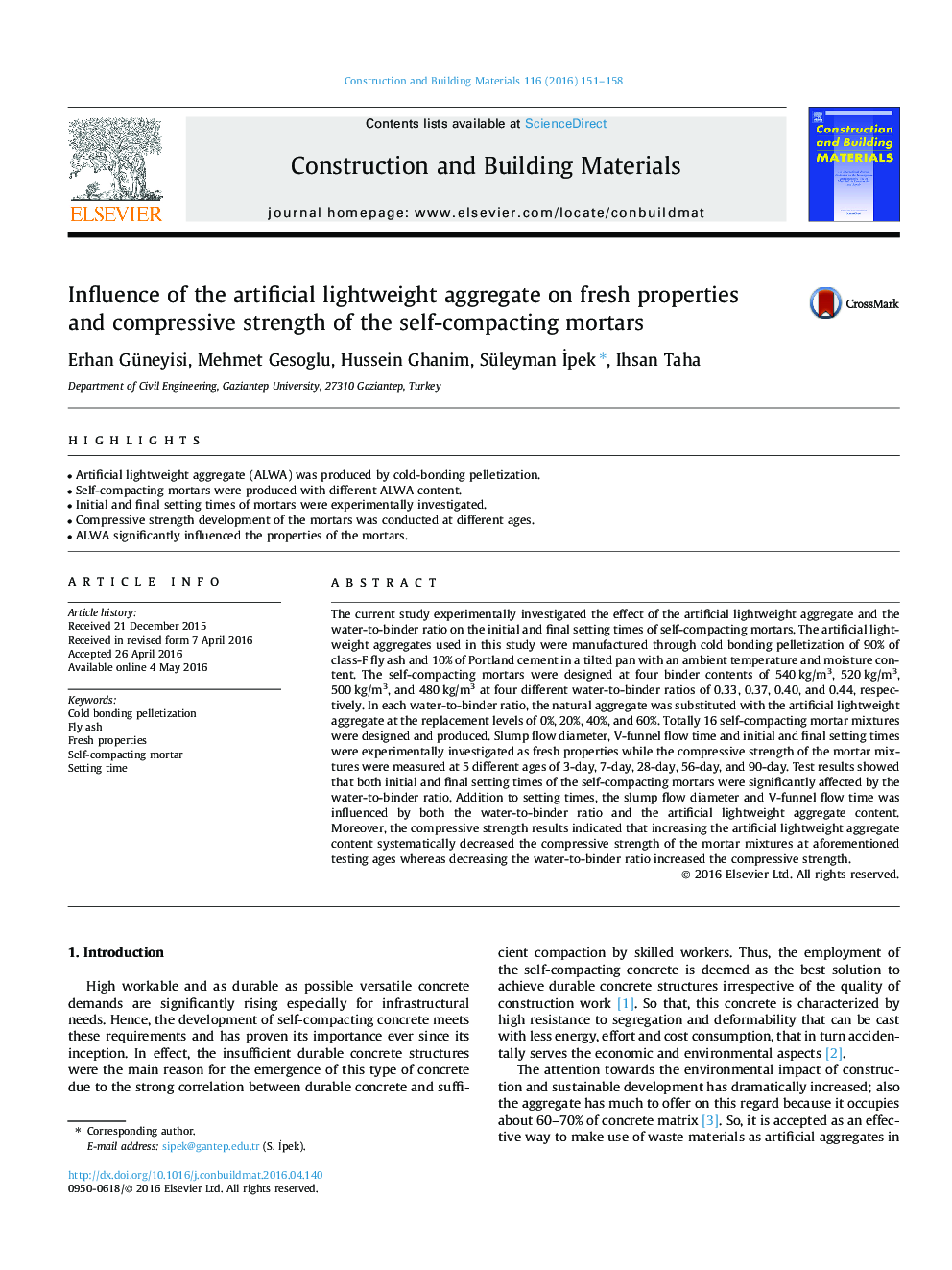| Article ID | Journal | Published Year | Pages | File Type |
|---|---|---|---|---|
| 6718624 | Construction and Building Materials | 2016 | 8 Pages |
Abstract
The current study experimentally investigated the effect of the artificial lightweight aggregate and the water-to-binder ratio on the initial and final setting times of self-compacting mortars. The artificial lightweight aggregates used in this study were manufactured through cold bonding pelletization of 90% of class-F fly ash and 10% of Portland cement in a tilted pan with an ambient temperature and moisture content. The self-compacting mortars were designed at four binder contents of 540Â kg/m3, 520Â kg/m3, 500Â kg/m3, and 480Â kg/m3 at four different water-to-binder ratios of 0.33, 0.37, 0.40, and 0.44, respectively. In each water-to-binder ratio, the natural aggregate was substituted with the artificial lightweight aggregate at the replacement levels of 0%, 20%, 40%, and 60%. Totally 16 self-compacting mortar mixtures were designed and produced. Slump flow diameter, V-funnel flow time and initial and final setting times were experimentally investigated as fresh properties while the compressive strength of the mortar mixtures were measured at 5 different ages of 3-day, 7-day, 28-day, 56-day, and 90-day. Test results showed that both initial and final setting times of the self-compacting mortars were significantly affected by the water-to-binder ratio. Addition to setting times, the slump flow diameter and V-funnel flow time was influenced by both the water-to-binder ratio and the artificial lightweight aggregate content. Moreover, the compressive strength results indicated that increasing the artificial lightweight aggregate content systematically decreased the compressive strength of the mortar mixtures at aforementioned testing ages whereas decreasing the water-to-binder ratio increased the compressive strength.
Related Topics
Physical Sciences and Engineering
Engineering
Civil and Structural Engineering
Authors
Erhan Güneyisi, Mehmet Gesoglu, Hussein Ghanim, Süleyman Ä°pek, Ihsan Taha,
